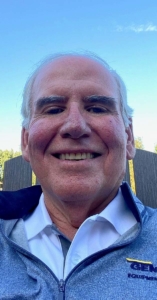Parts Inventory Management
Today we continue with another guest blog from Steve Day.
In the next several blogs we are going to be discussing inventory management. Please try to stay awake. There are thousands of books on this topic and I am not going to write another one. I am not going to go into excruciating detail since most of those books do a pretty good job of causing pain. Instead I am going to focus on a few areas that a Product Support GM or a Distributor Principal should focus on to drive customer support and profit.
I have managed Parts Operations at both a manufacturer and a distributor. I am going to be focused on distribution for purposes of this blog.
Manufacturers and Distributors have similar goals for their parts operations. We both want to take great care of our customers, provide real value, sell lots of parts and make lots of money. We also have very different areas we need to focus our efforts on.
I will start with a personal anecdote. When I moved from a manufacturer to a distributor, I decided to take a very aggressive inventory position to provide the best level of support I could. If we sold a part in the company twice a year, we were going to stock it. My over the counter fill immediately moved up a couple of points. Then it just sat there barely moving a tenth of a point year after year. What was going on?
I decided to run reports to see how parts that met the two sales in a year criterion fared in the years following them being put into the system. I didn’t see what I wanted to see so I went back another year and then another year and I kept seeing the same thing. Almost ninety percent of the time a part that sold twice (and only twice) in a year did not sell at all in the following year. I looked at parts that sold three times next. More then seventy five percent of the time it did not sell at all the following year. To make matters worse, when the parts did sell the customer was often the manufacturer or another dealer who couldn’t find it at the manufacturer. I was trying to take on the role of the manufacturer. I was also stocking a whole bunch of inventories I didn’t need, couldn’t sell and didn’t help either my distributorship or my customer.
We changed our focus on stocking criteria, expediting, weeks on hand, branch levels, logistics and targets. We changed management in the department and our focus. We went from a bit over two turns a year to eight turns a year and our branch over the counter fill rates and company fill rates improved. It happened in less than 6 months. I didn’t feel proud. I felt very foolish.







